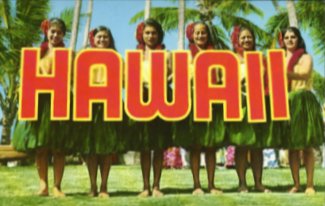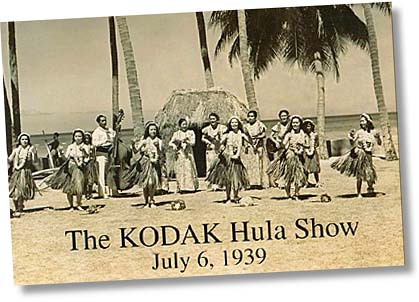Coral doesn’t grow in fresh water. So, where a stream enters a coastal area, there is typically no coral growth at that point – and, as the freshwater runs out into the ocean, a coral-less channel is created.
In its natural state, thanks to Nuʻuanu Stream, Honolulu Harbor originally was a deep embayment formed by the outflow of Nuʻuanu Stream creating an opening in the shallow coral reef along the south shore of Oʻahu.
Honolulu Harbor (it was earlier known as Kuloloia) was entered by the first foreigner, Captain William Brown of the English ship Butterworth, in 1794.
They called the harbor “Fair Haven” which may be a rough translation of the Hawaiian name Honolulu (it was also sometimes called Brown’s Harbor.) The name Honolulu (meaning “sheltered bay” – with numerous variations in spelling) soon came into use.
More sailors came. Captain William Sumner arrived in the Islands in 1807. Arriving first at Kaua‘i, Sumner jumped-ship and lived amongst the Hawaiians there. Kaumuali‘i was the king of Kaua‘i at the time, and when he saw Sumner, he was entranced by this youth, and took him as a “keiki hoʻokama” (adopted him.)
In the Islands, Kamehameha I, who had been living at Waikiki, moved his Royal Residence to Pākākā at Honolulu Harbor in 1809. Sumner served as one of the captains on ships in this fleet.
Some foreigners, like Sumner who sailed ships for Kamehameha, Liholiho (Kamehameha II) and Kauikeaouli (Kamehameha III,) were awarded land grants for their services.
In 1819, Kamehameha I gave land to Sumner for services rendered. This site was at the corner of today’s Hotel and Punchbowl Streets (near where the present Barracks are at ʻIolani Palace.)
Sumner was also awarded “… a fishery of the 647-Diamond Head acres of the reef lying between the Kalihi and Honolulu Harbor Channels. The area carried the Hawaiian name of Kaholaloa (Koholaloa, Kahololoa, Kaholoa.) The Ewa portion of this reef was designated Mokauea.”
Hawai‘i’s whaling era began in 1819 when two New England ships, the Balena out of New Bedford, and the Equator, out of Nantucket, became the first whaling ships to arrive in the Hawaiian Islands.
Rich whaling waters were discovered near Japan and soon hundreds of ships headed for the area. The central location of the Hawaiian Islands between America and Japan brought many whaling ships to the Islands.
With increased whalers to the Islands, so did disease. A law was passed noting, “All vessels having had contagious diseases on board … on arrival at Sandwich Islands, or at any port hereof, shall be entirely at the direction of the Board of Health … all vessels quarantined … shall keep constantly flying, during the day, a yellow flag at the main top.” (Quarantine Laws, May 29, 1839)
The first efforts to deepen Honolulu Harbor were made in the 1840s. The idea to use the dredged material, composed of sand and crushed coral, to fill in low-lying lands was quickly adopted. Some of the material was deposited on the fringing reef.
“In the year 1849 … the land of Kahololoa, was confirmed to William Sumner by Land Commission Award No, 153 … The title to these lands passed to JI Dowsett and John K Sumner, and from them to the Dowsett Company, Limited, and the Oahu Railway & Land Company.”
In 1872, the small island off Iwilei – “Kamokuʻakulikuli” – became the site of a quarantine station used to handle the influx of immigrant laborers drawn to the islands’ developing sugar plantations. The site is described as “little more than a raised platform of sand and pilings to house the station, with walkways leading to the harbor edge wharf, where a concrete sea wall had been constructed” and as “a low, swampy area on a reef in the harbor”.
Improvements were made. “Looking seaward from the prison I noticed a building which had been erected upon the reef, and on enquiry found it to be a Quarantine Station. … (it was) used occasionally as a temporary accommodation for immigrants.”
Then, the arrival “of a vessel bringing twenty-five Chinese passengers, among whose crew small-pox had broken out, demonstrated the foresight of the Government in erecting this commodious building…” (Bowser, 1880-1881; Maly)
More came. “Over seven hundred Chinese immigrants, mostly men, who came here on the steamer Septima on the 13th of last month, were placed in quarantine on their arrival, on account of the existence of small pox among them. For nine days they were detained on board of the ship in the harbor, until the quarters were prepared for them on the quarantine island.”
“Those ill with small-pox were removed from among the others as soon as the disease appeared, and finally when about twenty days had passed since the last case had been removed the Board of Health allowed them to go as fast as they found employment; or as they found responsible persons who would become responsible to the Board of Immigration that they would not become vagrants or a charge on the community for their support.” (Hawaiian Gazette, March 23, 1881)
By 1888, Kamokuʻākulikuli Island had been expanded and was known as “Quarantine Island.” If vessels arrived at the harbor after 15 days at sea and contagious disease was aboard, quarantine and disinfecting procedures were required at Quarantine Island. (Cultural Surveys)
“Upon annexation of the islands the United States took possession of Quarantine Island in the belief that the title to that land had been vested in the Hawaiian government. (Dowsett and OR&L filed suit.)”
In a compromise, “in 1902 the (Oʻahu Railway & Land Company) and the Dowsett Company turned over to the federal government 550-acres of what is now Quarantine Island and adjacent ground, and for themselves kept only 82-acres. (They also retained wharfage privileges and rights to access the channel/harbor.)” (Honolulu Star Bulleting, June 16, 1914)
Quarantine Island became the largest United States quarantine station of the period, accommodating 2,255-individuals. This facility included two hospitals and a crematorium. (Cultural Surveys)
Dredged materials from improvements to Honolulu harbor had enlarged Quarantine Island again and by 1906 the island was encircled by a seawall and was 38-acres. By 1908 the Quarantine Station consisted of Quarantine Island and the reclaimed land of the Quarantine wharf (with a causeway connecting the two.)
On February 15, 1910, Honolulu Harbor Light station was built and the beacon went into service. Soon, with added filling and subsequent connection of the two emergent islands on the reef, the resulting single island took the name Sand Island.
In 1916, Sand Island Military Reservation was established on the reclaimed land of the quarantine station. Subsequent episodes of harbor improvements resulted in enlarging the island and, by 1925 the reef around Sand Island had been removed and the island was completely surrounded by water. (Dye)
Following the bombing of Pearl Harbor and declaration of martial law on December 7, 1941, military authorities immediately rounded up Japanese and placed them in internment camps. Those arrested on Oʻahu were initially crowded into the Honolulu Immigration Station pending a hearing or a short boat ride to Sand Island.
In May 1942, military authorities turned the quarantine station into the Sand Island Detention Center, complete with 10-foot-tall fences. Other internment facilities were constructed in the Islands and on the continent. By the end of the war, an estimated 1,440-people were detained or interned in Hawai’i at one of five locations on O’ahu, the Big Island, Maui and Kaua’i.
During the early-1940s, Sand Island became the headquarters of the Army Port and Service Command and in the early 1940s the island was further enlarged with fill materials from the dredging of the seaplane runway. (Dye)
In 1959, the Department of the Army transferred Sand Island to the Territory of Hawaiʻi, and in 1963 ownership was transferred to the State of Hawaiʻi. (Star Bulletin, March 12, 1991) The island was once home to the Jaycee’s 50th State Fair.
Initial vehicular access was via a causeway; in April 1962, the Army Corps of Engineers completed the Lt John R Slattery Bridge (Slattery was the first Army Corps of Engineers Honolulu District Engineer in 1905.) The two-lane bascule bridge (draw bridge) originally could be raised and lowered to allow boat traffic to pass underneath.
In the late-1980s, though, the state permanently sealed the metal bridge and built a new concrete bridge alongside, creating four lanes to accommodate the growing commercial traffic on and off the island.
Several other names have been associated with Sand Island. Lot Kamehameha (Kamehameha V) gave the name Mauliola to the island in reference to the island’s use as a quarantine station. (Star Bulletin, April 28, 1969) Older names for the island were Kamokuʻākulikuli or Kahaka‘aulana. Rainbow Island and ʻĀnuenue were names used in the 1970s. (Dye)





































